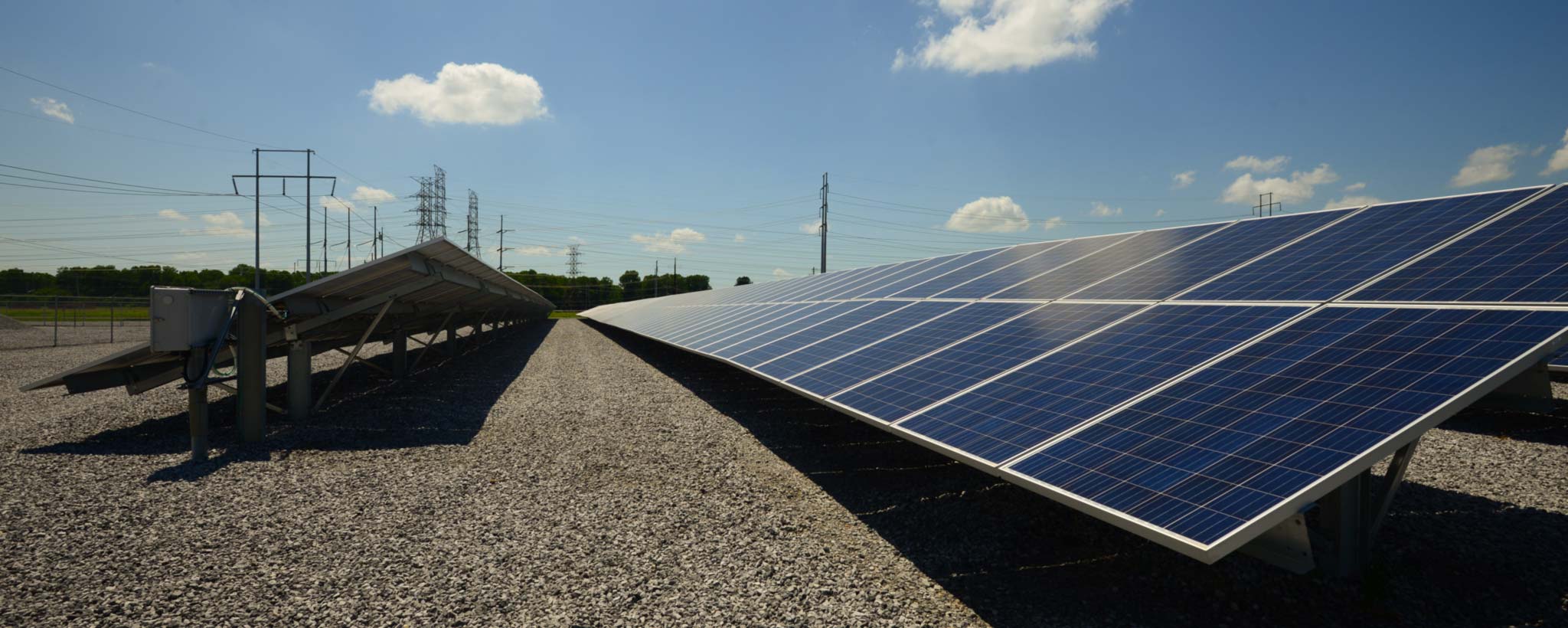
Solar Technology
Solar technology—and interest—is rapidly evolving, and TVA is exploring ways to incorporate more solar energy in its own portfolio, while developing products and programs to help homeowners and businesses partner with TVA and local power companies to produce solar power together.
The sun is the single most important source of energy for our planet. A natural nuclear fusion reactor, the sun releases tiny packets of energy called photons, which travel the 93 million miles to Earth in about 8 minutes. This solar energy powers many vital earthly functions including: warming the ground and air to form wind, fueling plants through photosynthesis, driving the water cycle, giving us light to see and many, many other things. Pretty much all energy sources on Earth today can trace their energy content back to the sun, even fossil fuels such as coal and oil. In the same way you can burn wood to release energy that trees capture from the sun, burning fossil fuels releases the energy that ancient plants captured from the sun
People have directly harnessed this solar energy for centuries. As early as the seventh century BCE, people used basic magnifying glasses to focus light from the sun to make fire. Over a century ago, a scientist in France was the first to use a “solar collector” to make steam to power a small engine.
Today, there are two main ways people use solar energy—thermal and electric.
Thermal Solar
Just as a pool of water gets hot on a summer day, solar energy can directly be used to heat water or another fluid in what is called a solar thermal process. For example, solar thermal water heaters use solar collectors (typically dark colored plates and tubes) to heat water for use in homes, businesses and industrial processes. On a large scale, some desert regions have used lots of solar thermal collectors to concentrate enough energy to create steam to generate electricity just as most other power plants—like nuclear, natural gas and coal—do today.
Electric Solar
Solar energy can also directly create electric power using “photovoltaic” (PV) cells. When photons from the sun hit a PV cell made of silicon, they knock electrons loose from their atoms. If conductors are attached to the positive and negative sides of a cell, it forms an electrical circuit where free electrons can flow producing a small amount of direct current—or DC—power. Multiple PV cells are joined together to make a PV panel (sometimes called a module), and multiple panels can be wired together to form a solar array—the more panels you can wire together, the more power you can expect to generate. Most electrical operations use alternating current (AC) electricity, so a device known as an inverter must be used to convert the DC solar power to AC electricity that can power items in your home like lights, TVs and dishwashers.
For over 40 years, TVA has conducted research into the operation and evolution of solar energy. Solar electric technologies like PV panels and inverters have continued to improve in performance and efficiency while costs are dropping. Today, solar panels are so affordable and readily available that they’re beginning to compete with other electricity generation technologies.
Researching Solar’s Future
TVA continues to perform research to understand what role solar energy can play in the Tennessee Valley. Despite the sun’s consistent around-the-clock performance, solar power remains one of the most unpredictable and variable sources of electricity generation due to the earth’s rotation (nighttime) and intermittent weather patterns such as cloud cover, rain, humidity (water molecules suspended in the air), etc. This does not necessarily line up well to the around-the-clock, 100% reliable electricity availability our society has become accustomed to.
TVA’s current solar research projects include:
- Understanding consumer preferences for solar power in residential homes, commercial businesses and community (large-scale) solar
- Predicting the adoption of solar energy based on economics and consumer preferences
- Modeling the variability of solar power as a generation technology to understand how that impacts efficiency and reliability
- Analyzing the “hosting capacity” of the current power system—and understanding how much solar the current utility system can accommodate before changes must be made
- Understanding the system integration and safety issues for utilities
- Providing solar information, products and services to support local power companies throughout the Tennessee Valley as the solar market evolves
- Developing tools for consumers, such as the Tennessee Valley Solar Calculator
- Combining solar with energy storage (such as batteries) to understand how this may improve some of the undesirable characteristics of solar generation, such as lack of reliability and consistency